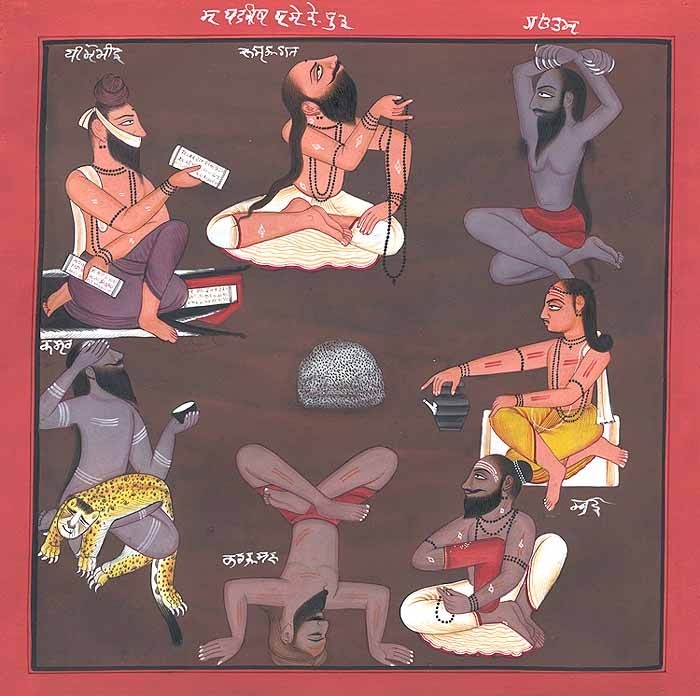
Those who are familiar with financial planning know the importance of diversification of assets – allocating monies to different asset classes (property, mutual funds, stocks, gold etc.) in different proportions and monitoring the overall performance of your portfolio. You also (hopefully) perform a budgeting exercise every month, to review where money was spent, and provision for upcoming expenses. How often have you done that with your own life?
This exercise will help you reflect on seven key areas of your life, understand where you need to spend your time, energy and attention, and monitor progress.
A few points to note:
- Diligence – While this exercise takes just 45 minutes a week, you should ensure that it is done religiously, on the same day (prefereably a weekend) and at the same time.
- Be honest – this is a self-evaluation, and will help you recognise some of your own areas of improvement. Hence, be truthful.
- Set boundaries – Don’t get over-enthusiastic and try to invest more time in some areas, than is practical. Remember, small steps.
How you do it
J.D. Meier, in his book – Getting Results the Agile Way: A Personal Results System for Work and Life, has mapped out seven areas, that can serve as a snapshot of your life. I have tried to modify the approach a bit, to add reflection to the process. Hence the term – saptarishis.

Step 1
Write down these seven saptarishis, and spend a couple of minutes reflecting on each of their aspects. I have mentioned some questions that can help you get started.
Mind – am I at peace? What can I do to help me feel more relaxed mentally, and content?
Body – am I healthy? Not as in a six-pack or a beach body, but truly healthy? Do I respect my body and maintain it, or do I abuse it?
Emotions – Am I able to understand them? express them? Have I thought of how I react to situations? What can I change?
Career – Am I happy at work? Am I doing what I truly like, or am passionate about? Am I doing justice to my talent and capability? Do I know my talent and capabilities?
Finances – Do I save enough? Do I overspend on things that I don’t need, or are unimportant to me? I work hard to make my money, do all my expenses justify my blood and sweat?
Relationships – Do I keep in touch with with the people I love the most? And who love me the most? How often do I listen to them, spend time with them, just be with them?
Fun – Am I all about work and making money? Or do I take some time out to be happy, to celebrate life? How can I be more happy?
Step 2
Identify how much time you spend on these seven areas (per week)
A good guesstimate would be enough. The objective is not to time yourself down to the minute, but to broadly understand where your current priorities lie, and whether you are spending enough time on them. For example, if one of your current goals is to lose weight, and you are spending only 1 hour a week on your Body, you cannot expect your desired results. This also helps to identify goals that you wish to to spend more time on, but don’t know how to go about it. For example, if you are looking for a change in career, then you can break down the Career area into two bits – your current work commitments, and the amount of time you wish to spend on your desired goal.
Step 3
Make targets
Set goals for each of the Saptarishis in your life. I do this by separating each area, into sub-areas, to help me get more specific. For instance, Mind is further sub-divided into spiritual pursuits and learning (Sanskrit at present), Body is divided into yoga, prānāyāma and diet, Career is divided into my current portfolio of engagements, and my targets for Avyakta Yoga, and so on. Once done, I allocate time and three specific targets to each. Be specific – “I want to learn more” is too open ended and cannot be quantified, and hence cannot be measured.
Step 4
Monitor results
Use ten minutes to review your targets for the week that passed, and whether you were able to achieve them. If not, ask what you can do to make it easier for you to get there – what needs to be changed? We sometimes set unrealistic targets (lose ten kgs in a week), so you may need to recalibrate and try again. Remember – consistency is key. And as always, celebrate small victories (the Fun bit is as essential as the rest!).
Here are a few questions that can help you (Chris Bailey’s A Year of Productivity helped me compile this list).
What do I need to spend more time on next week?
What did I spend too much time on last week?
What do I have to be mindful of next week?
What are some unresolved issues I’m having in each area?
What opportunities do I have in each of my saptarishis next week?
What obstacles will get in the way of my goals next week?
Am I going in the right direction with all my commitments?
Are there any commitments I need to add or remove? Expand or shrink?
सप्त – Sapta – seven, ऋषि – rishi – derived from the root rsh – which means to flow, can also be derived from drś – to see. So, one can interpret Saptarishi as seven flows, or streams of your life.
The number 7 is very significant, and appears in multiple forms. 7 Rishis – 7 days in a week, 7 colors in the rainbow, 7 Dhatus/minerals in the Body, 7 Swaras in Music, 7 Chakras (mystic centers) including Sahasrara in Upasana, 7 States of Consciousness, 7 steps during a Vedic Marriage , 7 upper lokas, 7 lower lokas, 7 (common) Meters in Sanskrit grammar…by the way, I was born on the 7th as well:)
In Hindu scriptures, the Saptarishi originally meant the seven organs of worldly interaction – two eyes, two ears, two nostrils, and one mouth…
The Saptarishis exercise gives us a snapshot of our lives – something that we fail to reflect on during our quest to fill up every minute of our time.
These seven areas are the most important – the quality of your life is a factor of how much time and effort you divide among these areas. You would note that finance is just one of the seven – and career is also just one.
Most of us neglect the rest of the saptarishis, to fulfil the finance and career parts of our lives. We almost neglect the body, don’t think much of the mind, and sacrifice meaningful relationships – thus leading to an imbalance – more unhappiness, more disease, and leading to anxiety and depression. Yoga is about bringing a balance to your existence – unless you do that, you would not be able to move ahead and beyond mere existing. Perform this exercise diligently, and I promise you new perspective on life, more meaningful, more happy, and more at peace:)

तदेष श्लोको भवति ।
अर्वाग्बिलश्चमस ऊर्ध्वबुध्नः, तस्मिन्यशो निहितं विश्वरूपम् ।
तस्यासत ऋषयः सप्त तीरे, वागष्टमी ब्रह्मणा संविदान ॥
इति ।
‘अर्वाग्बिलश्चमस ऊर्ध्वबुध्नः’ इतीदं तच्छिरः, एष ह्यर्वाग्बिलश्चमस ऊर्ध्वबुध्नः; ‘तस्मिन्यशो निहितं विश्वरूपम्’ इति प्राण वै यशो विश्वरूपम्, प्राणानेतदाह; ‘तस्यासत ऋषयः सप्त तीरे’ इति प्राणा वा ऋषयः, प्राणानेतदाह; ‘वागष्टमी ब्रह्मणा संविदाना’ इति वागष्टमी ब्रह्मणा संवित्ते ॥ ३ ॥
tadeṣa śloko bhavati |
arvāgbilaścamasa ūrdhvabudhnaḥ, tasminyaśo nihitaṃ viśvarūpam |
tasyāsata ṛṣayaḥ sapta tīre, vāgaṣṭamī brahmaṇā saṃvidāna ||
iti |
‘arvāgbilaścamasa ūrdhvabudhnaḥ’ itīdaṃ tacchiraḥ, eṣa hyarvāgbilaścamasa ūrdhvabudhnaḥ; ‘tasminyaśo nihitaṃ viśvarūpam’ iti prāṇa vai yaśo viśvarūpam, prāṇānetadāha; ‘tasyāsata ṛṣayaḥ sapta tīre’ iti prāṇā vā ṛṣayaḥ, prāṇānetadāha; ‘vāgaṣṭamī brahmaṇā saṃvidānā’ iti vāgaṣṭamī brahmaṇā saṃvitte || 3 ||
Regarding this there is the following verse: ‘There is a bowl that has its opening below and bulges at the top; various kinds of knowledge have been put in it; seven sages sit by its side, and the organ of speech, which has communication with the Vedas, is the eighth.’ The ‘bowl that has its opening below and bulges at the top’ is this head of ours, for it is the bowl that has its opening below and bulges at the top. ‘Various kinds of knowledge have been put in it,’ refers to the organs; these indeed represent various kinds of knowledge. ‘Seven sages sit by its side,’ refers to the organs; they indeed are the sages. ‘The organ of speech, which has communication with the Vedas, is the eighth,’ because the organ of speech is the eighth and communicates with the Vedas.
इमावेव गोतमभरद्वाजौ, अयमेव गोतमः, अयं भरद्वाजः; इमावेव विष्वामित्रजमदग्नी, अयमेव विश्वामित्रः, अयं जमदग्निः; इमावेव वसिष्ठकश्यपौ, अयमेव वसिष्ठः, अयं कश्यपः; वागेवात्रिः, वाचा ह्यन्नमद्यते, अत्तिर्ह वै नामैतद्यदत्रिरिति; सर्वस्यात्ता भवति, सर्वमस्यान्नं भवति य एवं वेद ॥ ४ ॥
imāveva gotamabharadvājau, ayameva gotamaḥ, ayaṃ bharadvājaḥ; imāveva viṣvāmitrajamadagnī, ayameva viśvāmitraḥ, ayaṃ jamadagniḥ; imāveva vasiṣṭhakaśyapau, ayameva vasiṣṭhaḥ, ayaṃ kaśyapaḥ; vāgevātriḥ, vācā hyannamadyate, attirha vai nāmaitadyadatririti; sarvasyāttā bhavati, sarvamasyānnaṃ bhavati ya evaṃ veda || 4 ||
Brihadaranyaka Upanishad (2.2.4)
These two (ears) are Gotama and Bharadvāja: this one is Gotama, and this one Bharadvāja: These two (eyes) are Viśvāmitra and Jamadagni: this one is Viśvāmitra, and this one Jamadagni. These two (nostrils) are Vasiṣṭha, and Kaśyapa: this one is Vasiṣṭha, and this one Kaśyapa: The tongue is Atri, for through the tongue food is eaten. ‘Atri’ is but this name Atti.’ He who knows it as such becomes the eater of all, and everything becomes his food.
